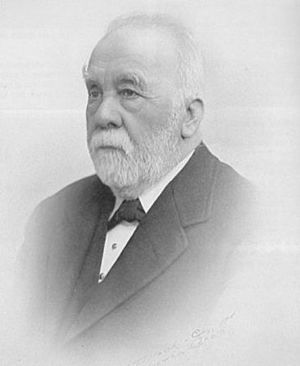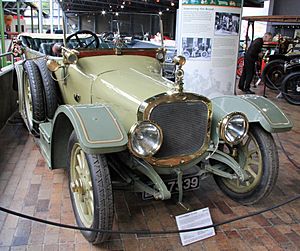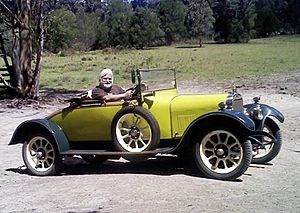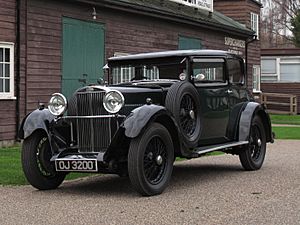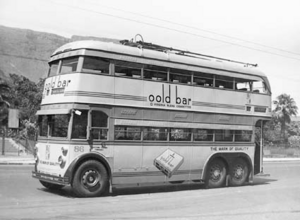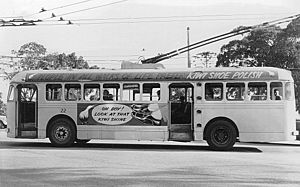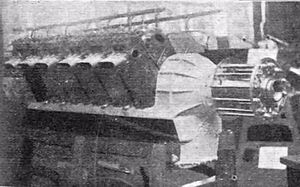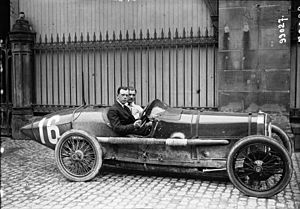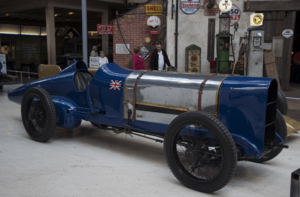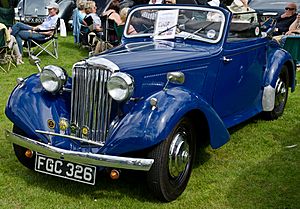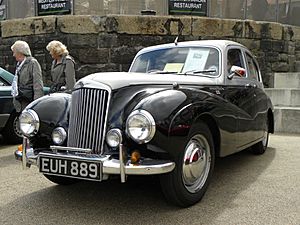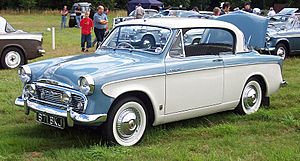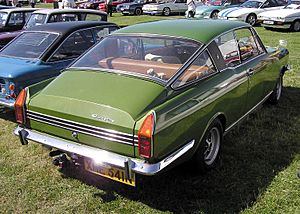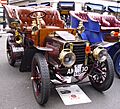Sunbeam Motor Car Company facts for kids
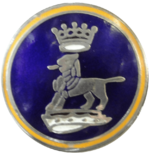 |
|

Sunbeam Works in Wolverhampton,
pictured in 2016 |
|
| Public Listed Company | |
| Industry | Automotive |
| Fate | Company acquired by Rootes Group in 1934; continued as a brand until 1981 |
| Successor | Sunbeam-Talbot |
| Founded | 1905 in Wolverhampton, Staffordshire, England |
| Founder | John Marston |
| Defunct | 1934 |
| Headquarters |
Wolverhampton
,
England
|
|
Key people
|
John Marston, Louis Coatalen |
| Products | Automobiles |
| Parent |
|
Sunbeam Motor Car Company Limited was a British company that made cars between 1905 and 1934. Their main factory was in Wolverhampton, England. The name "Sunbeam" was first used by John Marston in 1888 for his bicycle business.
Sunbeam started making cars in 1901. In 1905, the car part of the business became a separate company called Sunbeam Motor Car Company Limited. This was to keep it separate from Marston's bicycle company. Sunbeam motorcycles began being made later, in 1912.
A talented designer named Louis Coatalen joined Sunbeam. He loved motor racing and was very good at designing engines. During the First World War, Sunbeam built their own aero engines (engines for airplanes). They also built 647 aircraft designed by other companies.
Sunbeam's powerful engines led them into exciting Grand Prix car racing. They also helped set amazing world land speed records.
Even though Sunbeam made great cars and airplane engines, they faced tough times. By 1934, they had been losing money for a long time because car sales were very slow. They couldn't pay back money they had borrowed for their racing programs. Because of this, the company had to be sold. The Rootes brothers bought Sunbeam.
The new owners didn't restart making Sunbeam's older car models. However, Sunbeam trolleybuses (electric buses) continued to be made. The Rootes brothers originally wanted to sell fancy cars under the Sunbeam name. But by 1938, they decided to add "Sunbeam" to their Talbot car range, calling them Sunbeam-Talbots. In 1954, they dropped the "Talbot" part from the name.
The Sunbeam name was still used on new cars until 1976. After that, it became a model name. First, it was used for the Chrysler Sunbeam from 1977 to 1979. Then, after PSA Group took over Chrysler Europe, it was used for the Talbot Sunbeam until 1981. The Sunbeam name hasn't been used on a production car since then.
Contents
How Sunbeam Started
John Marston's Early Days
John Marston was born in London. His father was a mayor and landowner. John became an apprentice at a tinplate factory in Wolverhampton. In 1859, when he was 23, Marston started his own tinplate business. Later, he bought the Jeddo Works and continued his business there.
John Marston loved cycling. In 1897, he opened his Sunbeamland Cycle Factory. He made and put together bicycles there, calling them "Sunbeam." He registered the Sunbeam trademark in 1893. In 1895, his business became a company called John Marston Limited. The Sunbeam name was registered for cars in 1900.
Thomas Cureton, who worked with Marston, thought they should try making cars. The company's directors weren't keen on the idea, but Marston and Cureton kept working on it. Between 1899 and 1901, Sunbeam made some test cars. They drove them around Wolverhampton, but they didn't sell any.
In late 1900, they announced they had bought land to build a car factory. Their first car was described in February 1901. It was a two-seater with a four-horsepower engine.
Early Sunbeam Cars
The first Sunbeam car sold to the public was not designed by Marston and Cureton. It was designed by a young architect named Maxwell Mabberly-Smith. This car, called the Sunbeam Mabley, had a small 2.75-horsepower engine. It was an unusual car, carrying two passengers who sat facing the side of the road. The driver sat behind them. Several hundred of these cars were sold in 1901 and 1902.
At a car show in November 1902, Sunbeam showed a new car. It had a 12-horsepower, four-cylinder engine at the front. It also had a four-speed gearbox and pneumatic tires. This car cost £525. In 1904, they also introduced a six-cylinder, 16-horsepower car. These cars were designed to be comfortable for passengers.
Thomas Pullinger Joins Sunbeam
Thomas Pullinger joined Sunbeam in 1902. He had a lot of experience in making bicycles and cars in France. He suggested that Sunbeam should start by buying cars from another company, Berliet. Then, as sales grew, Sunbeam could start making more and more of the car parts themselves. He also advised selling off the remaining Mabley cars quickly.
In January 1905, the Sunbeam Motor Car Company Ltd was officially created. This new company bought the car-making part of John Marston's business. This separated the car business from the bicycle business. By 1912, Sunbeam's shares were listed on the London Stock Exchange, making it a public company.
Louis Coatalen's Influence
The talented car designer, Louis Coatalen, joined Sunbeam in 1909. He quickly became the chief designer. He changed how cars were made, so that most parts were built right in the Sunbeam factory. This helped improve the quality of the cars.
Coatalen loved racing because he believed it helped make cars better. He designed special high-power engines for racing. In 1910, he built Sunbeam Nautilus, a car made for setting land speed records. The next year, he created Sunbeam Toodles II, which was very successful in races. Sunbeam cars also did very well in the 1911 and 1912 Coupe de l'Auto races.
Coatalen also designed popular passenger cars, like the Sunbeam 12–16. By 1911, Sunbeam was building about 650 cars a year. They were seen as a major car manufacturer.
Sunbeam During World War I
Airplane Engines
In 1912, Sunbeam started making aircraft engines. While some of their designs, like the V8 Sunbeam Arab, had problems, others like the V12 Sunbeam Cossack were more successful. Coatalen kept trying out new and sometimes unusual engine designs. Sunbeam was also one of the first companies to build aluminum engines, which was a very advanced idea for the time.
Vehicles and Aircraft
During the First World War, Sunbeam built trucks and ambulances. They also helped make airplanes for the war effort. They produced 647 aircraft of different types by early 1919.
Changes in Leadership
After the war, Sunbeam faced changes. John Marston's son, Roland, who was supposed to take over, sadly died in 1918. John Marston himself passed away shortly after. Thomas Cureton, another key person, also became ill and died in 1921. Louis Coatalen became a joint managing director in 1914.
Joining S.T.D. Motors
In 1920, a company called Darracq bought Sunbeam Motor Car Company Limited. Darracq had also bought another car maker, Clément-Talbot, in 1919. The Sunbeam, Talbot, and Darracq businesses kept their own names and factories.
On August 13, 1920, Darracq changed its name to S.T.D. Motors Limited. The letters S, T, and D stood for Sunbeam, Talbot, and Darracq. This group aimed to combine their strengths in making cars.
The End of Sunbeam Cars
Sunbeam struggled during the Great Depression, a time when many people lost their jobs and money. In 1934, the company went into financial trouble and was sold to the Rootes brothers.
Sunbeam Products
At its busiest time in the 1920s, Sunbeam's factory had 3,500 employees. The factory covered a large area of 50 acres.
Popular Cars
Louis Coatalen was always trying to make improvements, so Sunbeam cars often had small changes each year. Two models were made the most: the 16 hp (known as "16.9") and the 20 hp (known as "20.9"). These were built from 1926 to 1930. The 16 hp was reliable, but the 20.9 hp was more powerful.
Sunbeam made their own car bodies, but they also supplied chassis to other companies that built custom bodies. Many fancy limousines were built on Sunbeam chassis.
Sunbeam faced financial problems in the early 1930s. In 1934, the company went into receivership (meaning it was managed by someone else to pay off debts). Six months later, in July 1935, Rootes Securities announced they had bought Sunbeam Motor Car Company.
Buses and Trolleybuses
After Rootes bought Sunbeam, car production stopped. However, Sunbeam continued to make trolleybuses. These were electric buses that got their power from overhead wires. During World War II, the Sunbeam factory was the only place in the UK making a specific type of trolleybus.
In 1946, another company bought Sunbeam Commercial Vehicles. Then, in 1948, the trolleybus part of the business was sold to Guy Motors Limited. They continued to build Sunbeam trolleybuses until 1964.
Sunbeam Airplane Engines
Sunbeam started building airplane engines in 1912. Louis Coatalen, their chief engineer, helped them become one of the top engine makers in the UK. Sunbeam stopped making airplane engines after Coatalen left in the 1930s. Some of their engine names included the Sunbeam Crusader, Sunbeam Cossack, and Sunbeam Matabele.
Grand Prix Racing Cars
The 1920s were a great time for Sunbeam. Their cars were well-built and reliable, and they had a fantastic reputation in racing. Louis Coatalen enjoyed building racing cars for famous drivers like Henry Segrave. Segrave won the French and Spanish Grand Prix races in 1923 and 1924.
A Sunbeam car, which was actually a re-badged Talbot, won the 1922 Tourist Trophy race with driver Jean Chassagne. Sunbeam also made the 1923 Sunbeam Grand Prix race car.
World Land Speed Record Cars
Coatalen also built a special racing car for the Brooklands track. It had a huge V12 engine. This famous car, called the Sunbeam 350HP, set three Land Speed Records. The first was in 1922, driven by Kenelm Lee Guinness, reaching 133.75 miles per hour.
Later, Malcolm Campbell bought the car, painted it blue, and named it "Blue Bird." In 1924, he set a new record of 146.16 mph at Pendine Sands in Wales. The next year, he pushed it even faster to 150.76 mph.
In 1926, Henry Segrave set another land speed record in a new Sunbeam car called "Tiger." Coatalen then decided to build an even bigger car, the giant Sunbeam 1000HP. It was powered by two powerful airplane engines. On March 29, 1927, this car set a new speed record of 203.792 mph! You can see this amazing car at the National Motor Museum in England.
A later attempt to set a record with the 1930 Silver Bullet car was not successful.
Sunbeam's Legacy
The Sunbeam name lives on in places like Sunbeam Gardens in London. One of the original factory buildings, now called Ladbroke Hall, still stands there.
Sunbeam Cars Under New Owners
Rootes Group Takes Over
The Rootes Group was known for "badge engineering." This means they would build one basic car design and then change its body and interior to sell it under different brand names. They stopped making the old models from the companies they bought, including Sunbeam. Instead, they used designs from their other brands like Hillman and Humber.
Rootes had planned to use the Sunbeam name for a large, expensive luxury car. But after almost four years, they decided to combine Sunbeam Motors with Clement-Talbot. They renamed the company Sunbeam-Talbot Limited. Their goal was to make good quality cars that were also affordable.
In 1938, Rootes created the new Sunbeam-Talbot brand. These cars combined the nice bodies of Talbot with the chassis (frame) of Hillman and Humber cars. They were put together at the Talbot factory in London. Models like the Sunbeam-Talbot 10 and the 3-litre were made. Production continued after World War II until 1948.
In 1948, the Sunbeam-Talbot 80 and 90 were introduced. These cars had a new, sleek design. The 80 used a Hillman engine, and the 90 used a modified Humber engine. The 80 model was not very powerful and was stopped in 1950. The 90 model was updated and eventually renamed the Sunbeam Mark III in 1954, dropping the "Talbot" name.
In 1953, a two-seater sports car called the Sunbeam Alpine was introduced. It was named after the Alpine Rally, where Sunbeam-Talbot cars had done very well. The Alpine Mark I and Mark III were hand-built. Production stopped in 1955. In 1955, a Sunbeam saloon car won the Monte Carlo Rally. The Alpine was replaced by the sporty Sunbeam Rapier in 1956.
A completely new Alpine was launched in 1959. In 1964, the Sunbeam Tiger was released. This car had a powerful V-8 Ford engine placed into the smaller Alpine frame. It was a big success, selling 7,000 units in three years.
Chrysler Takes Over
Around this time, Rootes was having money problems. In 1964, the American company Chrysler bought a large part of Rootes. Chrysler wanted to enter the European car market. It was interesting because Chrysler had already bought Simca, which had previously bought Talbot, one of the original brands in S.T.D. Motors.
Chrysler changed many things at Rootes. They stopped making some models and tried to create a single brand using the cheapest-to-produce models. This made customers less loyal to the Sunbeam brand. The Tiger car was stopped in 1967.
The last Sunbeam car produced was the Alpine/Rapier fastback (1967–76). After this, Chrysler, who owned Rootes, stopped using the Sunbeam brand name.
However, the Sunbeam name continued as a model name. A hatchback car based on the Hillman Avenger was called the Chrysler Sunbeam from 1977. When PSA Group took over Chrysler Europe, this model became the Talbot Sunbeam from 1979 until it was stopped in 1981. The Sunbeam name has not been used on a production car since then.
Images for kids
See also
- List of car manufacturers of the United Kingdom
- Sunbeam S7 and S8
- Sunbeamland


